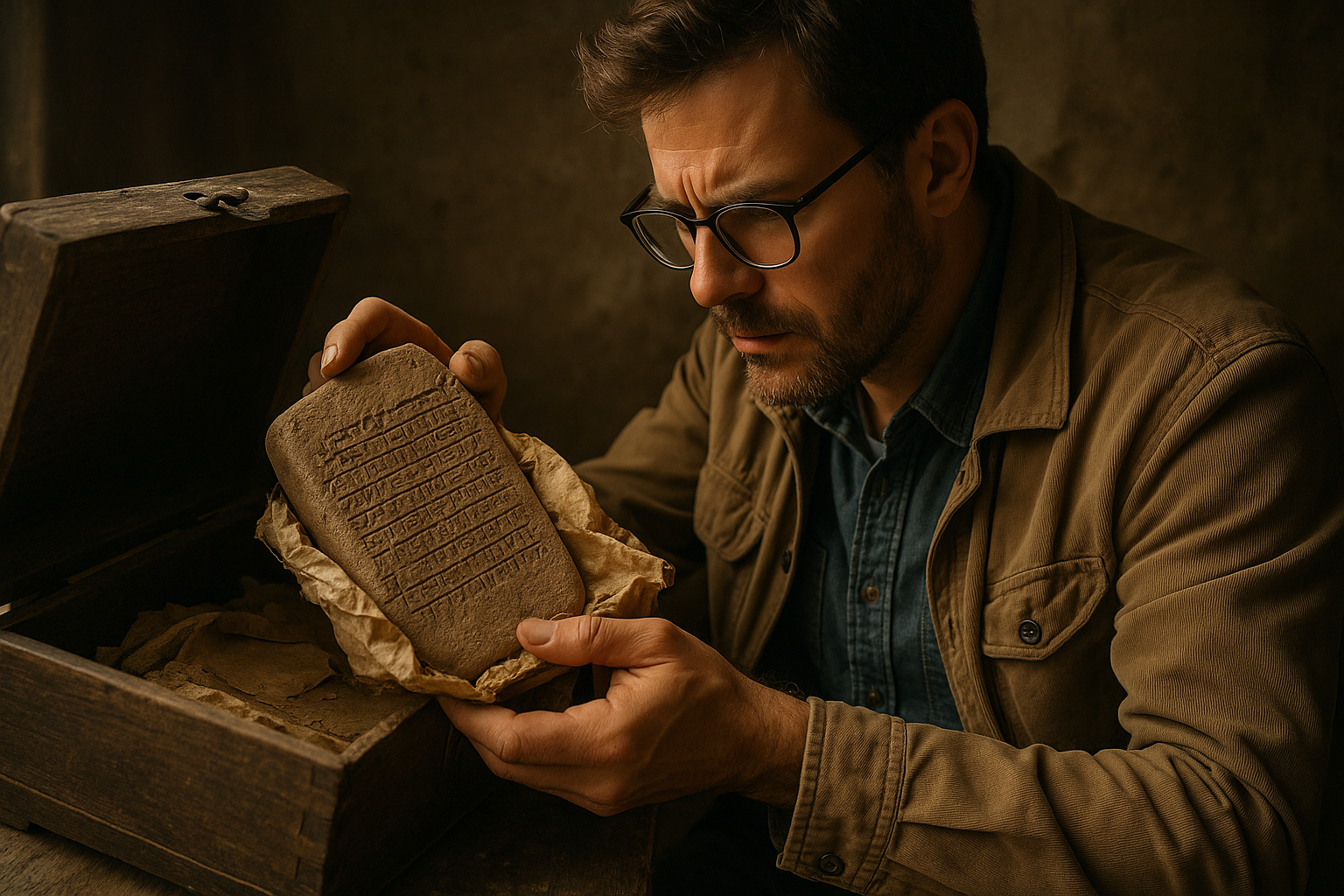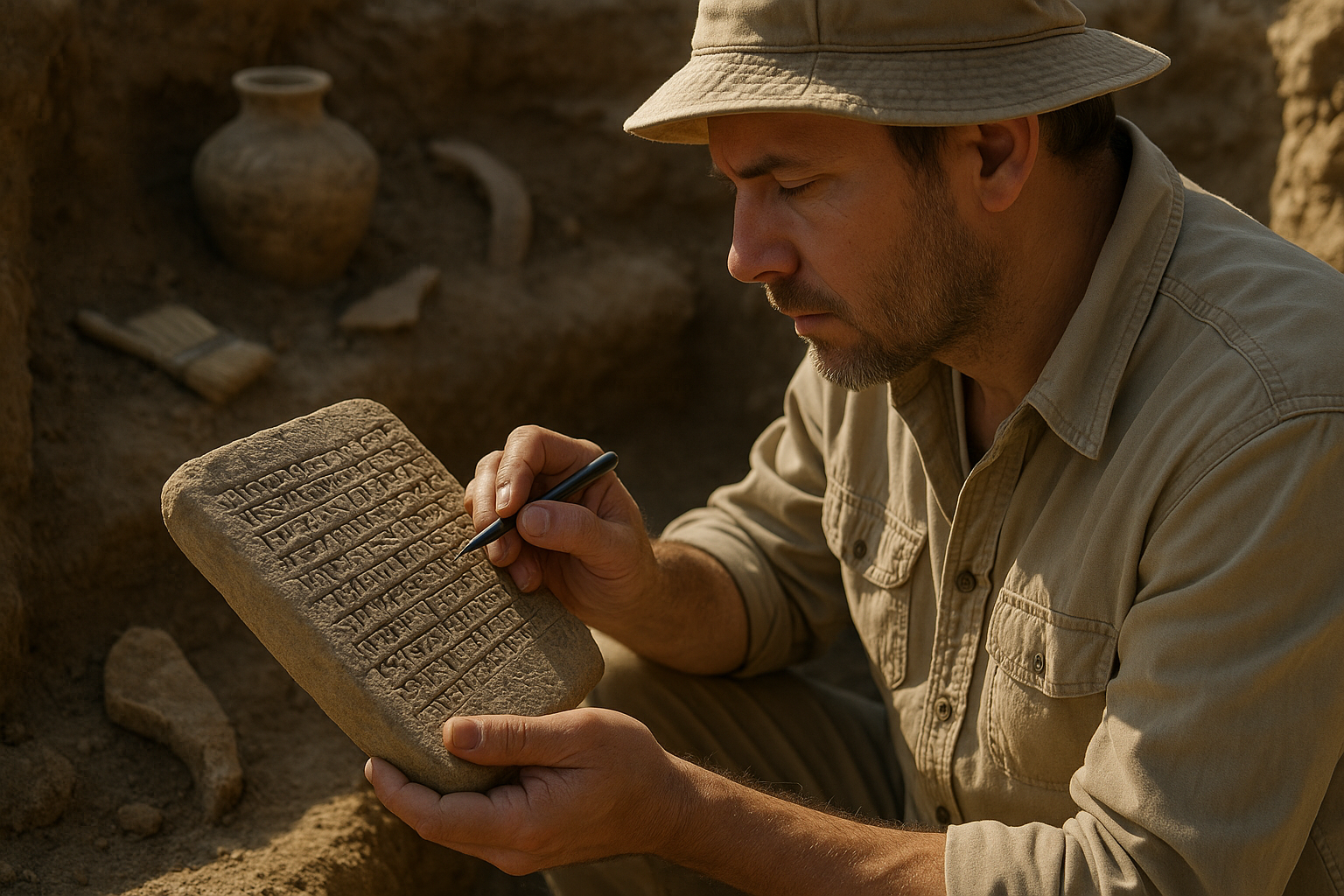Ancient texts hidden for millennia continue to emerge from archaeological sites, offering glimpses into prophetic traditions and historical records that challenge our understanding of past civilizations.
🔍 The Archaeological Renaissance of Lost Written Treasures
The discovery of ancient tablets has revolutionized our comprehension of human history, prophecy, and religious tradition. From the caves of Qumran to the libraries of Nineveh, these remarkable artifacts have resurfaced after centuries of obscurity, bringing with them secrets that scholars are only beginning to decode. The modern era has witnessed an unprecedented acceleration in archaeological discoveries, with advanced technology enabling researchers to locate, preserve, and interpret texts that were thought lost forever.
These tablets serve as time capsules, preserving the thoughts, beliefs, and predictions of civilizations long vanished. Clay, stone, and metal became the canvases upon which ancient scribes recorded prophecies, administrative records, religious texts, and wisdom literature. The durability of these materials has ensured that messages from antiquity can still speak to us today, offering insights into how our ancestors understood their world and attempted to predict their future.
📜 The Most Significant Tablet Discoveries in Modern History
The twentieth and twenty-first centuries have yielded extraordinary finds that have reshaped biblical scholarship, ancient Near Eastern studies, and our understanding of prophetic literature. The Dead Sea Scrolls, discovered between 1947 and 1956, represent perhaps the most significant manuscript find of the modern era. These texts, preserved in clay jars within desert caves, include the oldest known copies of biblical texts and previously unknown prophetic and sectarian writings.
The Mesopotamian Legacy: Cuneiform Revelations
The tablets unearthed from ancient Mesopotamia have provided unprecedented access to the prophetic and divinatory practices of Babylonian and Assyrian civilizations. The library of Ashurbanipal in Nineveh contained thousands of cuneiform tablets, including omen texts, prophecies, and astronomical records that demonstrate the sophisticated predictive systems employed by ancient scholars.
These tablets reveal that prophecy in the ancient world was not merely mystical pronouncement but often involved careful observation of natural phenomena, celestial movements, and historical patterns. The Babylonians developed complex systems of interpretation that sought to discern divine will through the examination of animal entrails, astronomical events, and unusual occurrences in nature.
The Enigmatic Nag Hammadi Library
In 1945, Egyptian farmers discovered a sealed jar containing thirteen leather-bound codices near the town of Nag Hammadi. These texts, written in Coptic, include numerous previously unknown gospels, apocalyptic texts, and prophetic writings that provide alternative perspectives on early Christian belief and practice. The prophetic visions contained within these documents offer stark contrasts to canonical scripture while revealing the diversity of prophetic interpretation in the early Christian centuries.
🗿 Decoding the Language of Ancient Prophecy
Understanding ancient prophetic texts requires more than linguistic translation; it demands cultural and contextual interpretation. Prophetic language employs symbols, metaphors, and cultural references that would have been immediately recognizable to contemporary audiences but require extensive scholarly apparatus for modern readers to comprehend.
Ancient prophecies often operated within established literary conventions. Biblical prophecy, for instance, frequently employed specific formulaic phrases such as “Thus says the Lord” to establish divine authority. Mesopotamian prophecies similarly utilized standardized introductions and conclusions that signaled their genre and authority to ancient readers.
The Symbolic Universe of Prophetic Tablets
Prophetic texts are rich with symbolism drawn from the natural world, political realities, and religious traditions. Animals frequently represent nations or political powers—lions, eagles, and bears appear throughout prophetic literature as coded references to empires and kingdoms. Cosmic imagery involving stars, sun, and moon often signifies divine intervention in human affairs or the overthrow of established orders.
Colors, numbers, and directions also carry prophetic significance. The number seven appears with remarkable frequency, representing completeness or divine perfection. The number forty indicates periods of testing or judgment. Directional references encode geopolitical realities, with threats typically emerging from the north in biblical prophecy, reflecting historical invasion patterns.
⚡ Prophecy as Historical Record: Dual Functions of Ancient Texts
One of the most fascinating aspects of prophetic tablets is their dual function as both predictive pronouncements and historical records. Many prophecies were recorded after the events they “predicted,” serving instead as theological interpretations of historical occurrences. This practice, known as vaticinium ex eventu (prophecy after the event), was a recognized literary technique in the ancient world.
The book of Daniel provides a classic example of this phenomenon. Scholarly analysis suggests that portions of Daniel were written during the Maccabean period, describing events from Babylonian times through the author’s present with remarkable “accuracy”—accuracy explained by the retrospective nature of the composition. The text then transitions to genuine prediction regarding future events from the author’s perspective.
Administrative Records Disguised as Prophecy
Some tablets initially classified as prophetic have proven to be administrative or historical records. The careful documentation of astronomical phenomena, for instance, served practical purposes for calendar maintenance and agricultural planning while also being interpreted for divinatory purposes. The line between record-keeping and prophecy was often blurred in ancient societies where divine oversight of earthly affairs was assumed.
🌟 Technologies Revolutionizing Tablet Discovery and Analysis
Modern technology has transformed the field of ancient text studies. Ground-penetrating radar and satellite imagery now enable archaeologists to locate potential excavation sites without disturbing the ground. These non-invasive techniques have led to the identification of numerous undiscovered sites that likely contain additional tablet collections.
Digital imaging technologies have revolutionized how scholars read damaged or faded texts. Multispectral imaging captures tablets under various wavelengths of light, revealing text that is invisible to the naked eye. Reflectance Transformation Imaging (RTI) creates detailed three-dimensional models of tablet surfaces, allowing researchers to detect even the faintest impressions left by ancient styluses.
Artificial Intelligence in Textual Reconstruction
Machine learning algorithms are now being trained to reconstruct fragmentary texts, predict missing portions of tablets, and even identify the individual scribal hands that produced ancient documents. These AI systems analyze thousands of complete texts to understand linguistic patterns, formulaic expressions, and stylistic features that enable educated guesses about lacunae in damaged tablets.
Natural language processing applications can now compare newly discovered texts with vast databases of known documents, quickly identifying parallels, quotations, and intertextual relationships that might take human scholars years to recognize. This technology accelerates the process of contextualizing new discoveries within the broader landscape of ancient literature.
📚 The Theological Implications of Newly Discovered Prophetic Texts
Each new tablet discovery has the potential to challenge or confirm existing theological understandings. When texts emerge that present alternative versions of familiar narratives or previously unknown prophetic traditions, religious communities must grapple with how these discoveries relate to established doctrine and canonical scripture.
The discovery of parallel flood narratives in Mesopotamian tablets, for instance, prompted extensive discussion about the relationship between biblical narratives and earlier Near Eastern traditions. Similarly, prophetic texts that describe messianic expectations different from those in canonical scriptures raise questions about the diversity of beliefs in ancient religious communities.
Continuity and Innovation in Prophetic Tradition
Newly discovered tablets often reveal both continuity and innovation in prophetic tradition. Certain themes, images, and concerns persist across centuries and cultures, suggesting shared human anxieties and hopes. Yet each generation and culture adapted prophetic tradition to address contemporary circumstances, producing unique expressions of familiar themes.
The apocalyptic tradition, with its dramatic visions of cosmic conflict and divine intervention, appears in various forms across cultures and periods. Tablets reveal how this tradition developed from earlier prophetic forms, incorporating elements of wisdom literature, throne vision accounts, and historical reviews to create a distinctive literary genre that profoundly influenced Jewish, Christian, and Islamic eschatology.
🔐 Conservation Challenges and Ethical Considerations
The preservation of ancient tablets presents significant challenges. Climate-controlled environments must be maintained to prevent deterioration. Clay tablets can be surprisingly durable but remain vulnerable to moisture, temperature fluctuations, and handling damage. Metal and stone tablets face different conservation issues, including corrosion and structural weakening.
Ethical questions surround the acquisition and ownership of ancient tablets. The illegal antiquities trade has resulted in countless tablets being removed from their archaeological contexts, destroying invaluable historical information. International agreements now seek to protect cultural heritage and ensure that discoveries remain in their countries of origin or are repatriated when appropriate.
Digital Preservation and Access
Major institutions are undertaking massive digitization projects to create high-resolution images and three-dimensional models of tablet collections. These digital archives serve multiple purposes: they provide backup copies in case of damage or destruction, enable worldwide scholarly access without requiring physical handling of fragile originals, and allow advanced computational analysis of large text corpora.
Open-access initiatives are democratizing scholarship by making these digital resources freely available to researchers and interested individuals worldwide. Collaborative online platforms enable scholars to share annotations, translations, and interpretations, accelerating the pace of research and discovery.
✨ Prophetic Patterns: What Ancient Tablets Reveal About Human Nature
Beyond their historical and religious significance, prophetic tablets offer profound insights into human psychology and social dynamics. The concerns expressed in ancient prophecies—fears of invasion, anxiety about divine displeasure, hopes for justice and restoration—resonate across millennia, revealing continuities in human experience.
Prophetic texts often emerge during periods of crisis, offering explanations for suffering and visions of eventual deliverance. This pattern appears consistently across cultures and periods, suggesting that prophetic literature serves psychological and social functions beyond its ostensible purpose of divine communication. It provides meaning in chaos, maintains hope during oppression, and offers frameworks for understanding traumatic experiences.
The Social Function of Prophetic Record-Keeping
The meticulous recording of prophecies served to establish and maintain the authority of prophetic figures and institutions. When predictions came to pass, the written record provided evidence of prophetic legitimacy. When they failed to materialize, interpretive strategies could recontextualize or spiritualize the prophecies, preserving prophetic authority despite apparent disconfirmation.
Tablets also reveal the complex social negotiations surrounding prophetic authority. Multiple competing prophetic voices often appear within single communities, each claiming divine authorization. The written record became a tool in these conflicts, with written prophecies carrying greater weight than oral pronouncements and scribal communities controlling which prophetic voices would be preserved for posterity.
🌍 The Future of Tablet Discovery and Interpretation
Unexplored archaeological sites across the Middle East, Mediterranean region, and beyond undoubtedly contain additional tablet collections awaiting discovery. Political instability and ongoing conflicts in regions rich with archaeological treasures have temporarily halted excavation in many areas, but future stability will likely yield new finds.
Climate change poses both threats and opportunities for archaeology. Rising sea levels and changing weather patterns endanger some sites while potentially exposing others. Melting glaciers and shifting desert landscapes may reveal locations previously inaccessible to archaeologists.
As analytical technologies continue advancing, scholars will be able to extract more information from tablets already in collections. Chemical analysis of tablet materials can reveal geographic origins, dating techniques become increasingly precise, and computational methods enable new types of literary and linguistic analysis previously impossible.

💎 Wisdom from the Depths of Time
The lost tablets being uncovered in our era represent more than archaeological curiosities or historical documents. They are voices from the past speaking to the present, offering perspectives that can enrich contemporary understanding of prophecy, history, and human existence. These ancient records demonstrate that humans have always sought to understand their place in cosmic narratives, to discern patterns in historical events, and to imagine futures shaped by divine intervention or cosmic justice.
As technology enables us to recover and interpret more of these precious artifacts, we gain not only historical knowledge but also appreciation for the intellectual and spiritual sophistication of ancient cultures. The prophecies and records preserved on tablets reveal complex theological systems, sophisticated literary artistry, and profound engagement with perennial human questions about meaning, justice, and destiny.
The work of uncovering and interpreting lost tablets continues, with each discovery adding pieces to the vast puzzle of human history and belief. These ancient texts challenge us to think deeply about how we preserve and interpret our own era’s records, how we understand prophecy and prediction, and how we situate ourselves within long traditions of seeking meaning in uncertain times. The secrets revealed by ancient tablets ultimately illuminate not just the past but also our present condition and future possibilities.
Toni Santos is a temporal researcher and symbolic archaeologist specializing in the study of forgotten burial systems, sacred archival practices, and the visual languages embedded in ancient temporal lore. Through an interdisciplinary and artifact-focused lens, Toni investigates how humanity has encoded knowledge, memory, and mystery into the temporal world — across cultures, rituals, and vanished civilizations. His work is grounded in a fascination with time capsules not only as vessels, but as carriers of hidden meaning. From extinct burial ritual practices to mythical codices and secret temporal seals, Toni uncovers the visual and symbolic tools through which cultures preserved their relationship with the temporal unknown. With a background in design semiotics and temporal artifact history, Toni blends visual analysis with archival research to reveal how time capsules were used to shape identity, transmit memory, and encode sacred knowledge. As the creative mind behind eltonxy, Toni curates illustrated chronologies, speculative temporal studies, and symbolic interpretations that revive the deep cultural ties between artifacts, ritual markings, and forgotten messages. His work is a tribute to: The lost temporal wisdom of Forgotten Time Capsule Burial Rituals The guarded archives of Sacred Codices and Forgotten Temporal Archives The mythopoetic presence of Temporal Symbols and Ritual Markings The layered visual language of Vanished Artifacts and Temporal Messages Whether you're a temporal historian, symbolic researcher, or curious gatherer of forgotten chronological wisdom, Toni invites you to explore the hidden roots of time capsule knowledge — one seal, one glyph, one message at a time.




